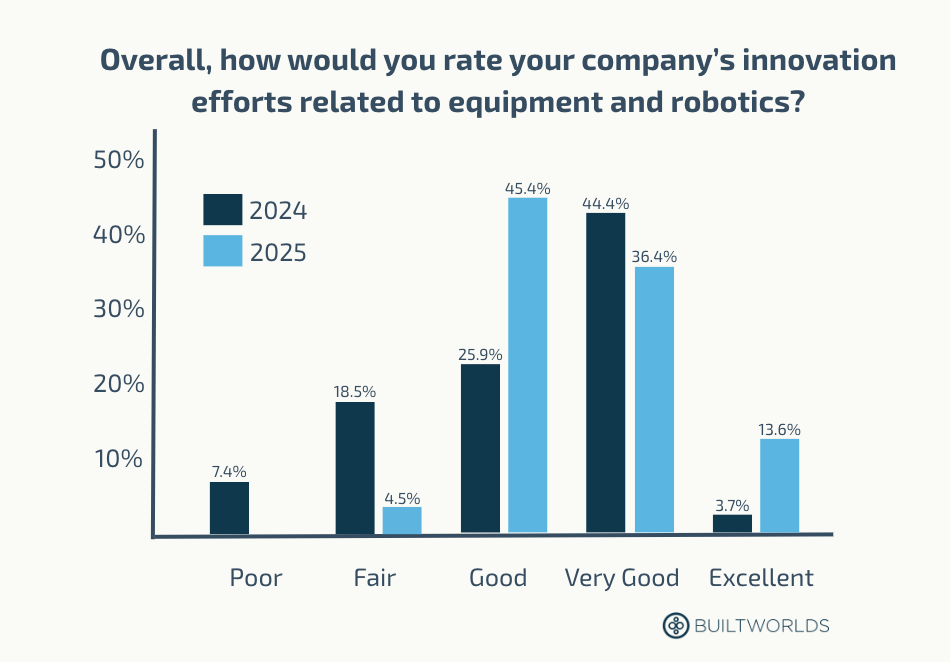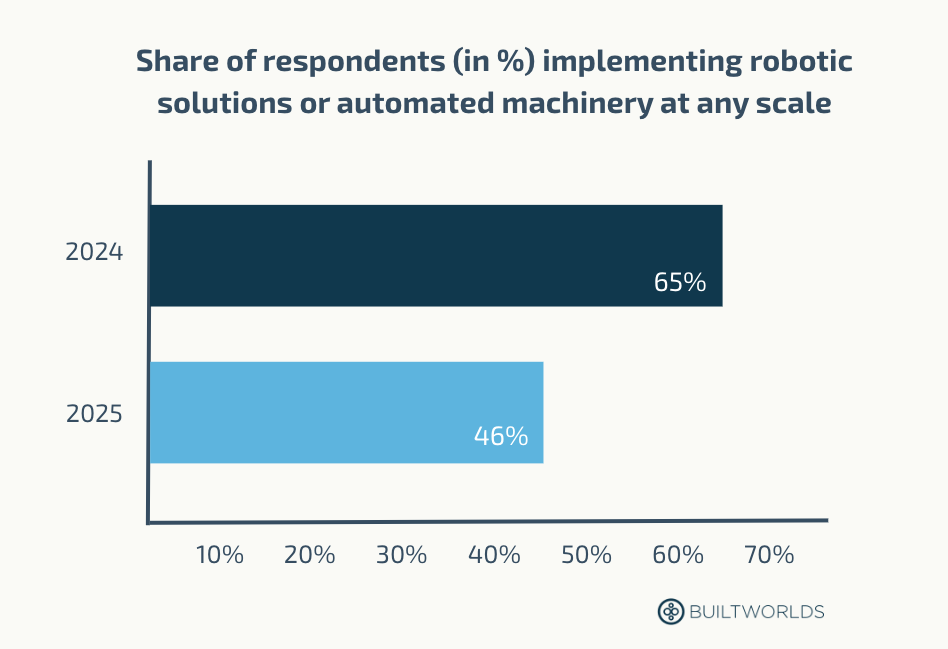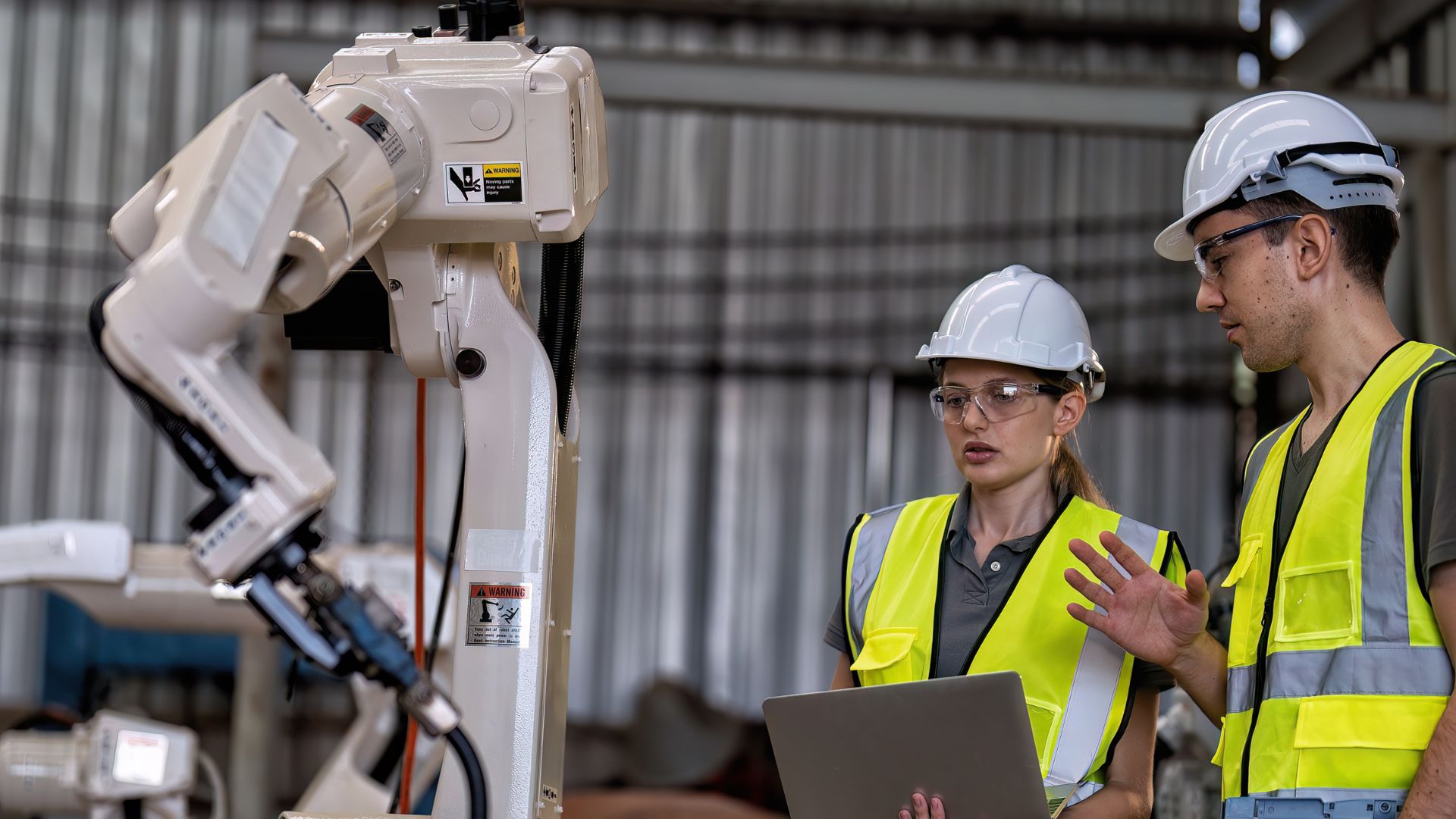Construction professionals are increasingly optimistic about robotics in their companies, according to BuiltWorlds’ just-released 2025 Equipment & Robotics Benchmarking Report. But while the mood is upbeat, actual implementation still lags in some areas. This raises important questions about the path from experimentation to standard practice.
A stronger appetite for robotic innovation
BuiltWorlds surveyed a diverse group of construction firms, including general contractors, specialty trades, and subcontractors, with annual revenues ranging from $2 million to $5 billion. This year’s data reveals a significant shift in how companies perceive their internal robotics initiatives.
Negative attitudes have dropped significantly. In fact, not a single respondent rated their company’s robotics strategy as “poor,” compared to over 7% last year. Meanwhile, positive evaluations have surged: 95% of respondents now describe their organization’s efforts as “good” or better, up from 74% in 2024. “Excellent” ratings alone increased by nearly 10 percentage points.
The trend suggests growing confidence in the strategic value of robotics. This is particularly true for tasks such as layout, drilling, and material transport, when combined with connected equipment and data-driven workflows.

Implementation: Fewer pilots, more focused use
However, when it comes to actual deployment of robotics and automated machinery, this year’s numbers show a dip. Only 46% of companies report using robotics on their projects, down from 65% in 2024.
At first glance, that might seem like a retreat. But the story behind the numbers is more nuanced.
“Last year, much of the reported robotics use came from pilot programs,” notes Audrey Lynch, the report’s author and BuiltWorlds senior research analyst. “This year, we’re seeing fewer pilots but more recurring use—indicating that companies are becoming more selective, but also more serious about implementation.”
In other words, experimentation is giving way to steady, if small-scale, adoption. Robotics is transitioning from hype to habit.


A gradual shift toward intelligent jobsites
This year’s findings point to an industry in transition. While broad adoption of robotics remains limited, the direction is clear. Contractors and tech providers are laying the groundwork for smarter job sites, ones that integrate field execution with digital planning, driven by data and intelligent equipment.
Robots do not operate in a vacuum. Without up-to-date design data, well-planned processes, and robust technical integration, robotics remains a marginal technology. Unlike humans, robots demand systemization.
Going forward, we can expect robotics to increasingly leverage AI and become more autonomous, moving beyond rigid preprogrammed tasks. This will be essential if they are to thrive in the ever-changing context of project-based construction.
The full report is available for the members of BuiltWorlds.
View the original article and our Inspiration here


Leave a Reply